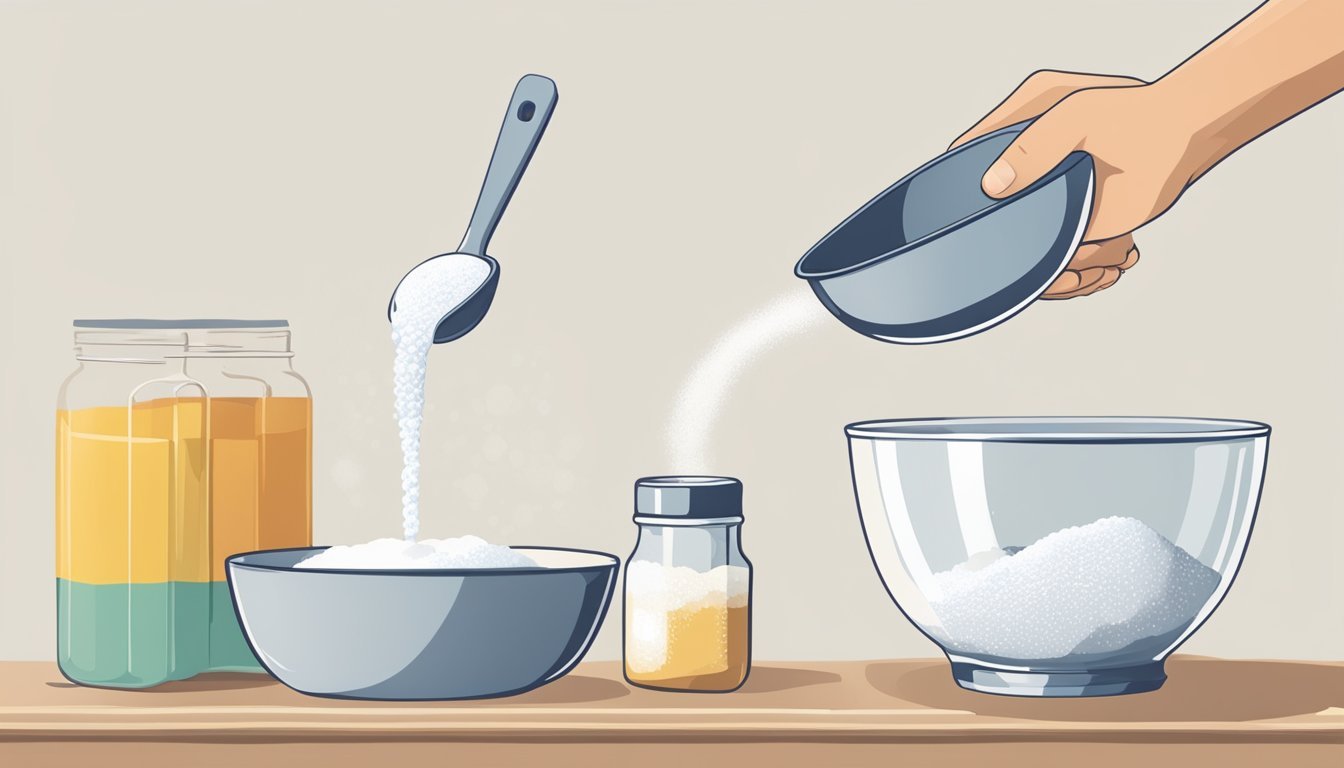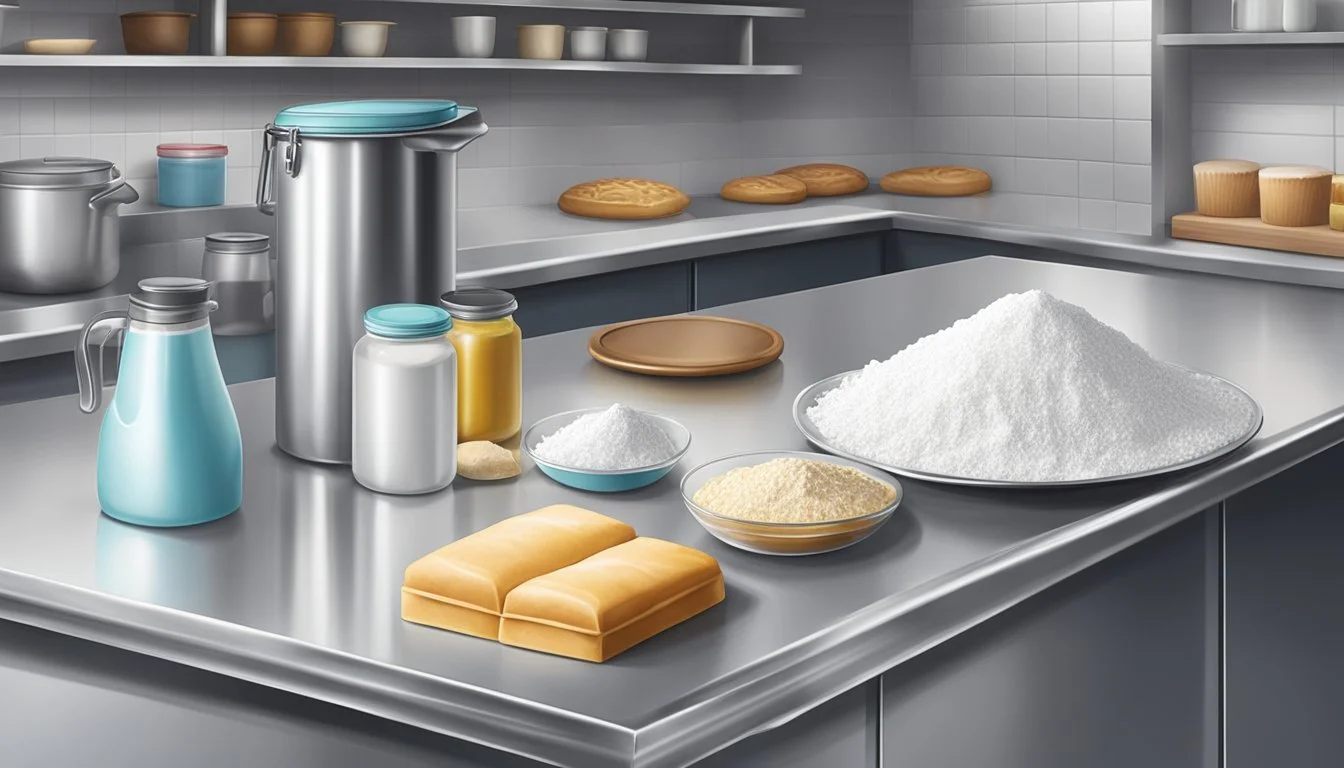How Long Does Icing Sugar Last?
Shelf Life and Storage Tips
Icing sugar (how long does icing sugar last?), commonly referred to as powdered sugar (how long does sugar last?) or confectioner's sugar, is a staple in the world of baking and confectionery. It is granulated white sugar that has been finely ground to a smooth powder and often includes an anti-caking agent such as cornstarch. This addition helps to maintain its free-flowing properties and prevents clumping. Icing sugar is integral to various recipes, delivering sweetness and a refined texture to frostings, icings, and dusted finishes on sweets and pastries.
The longevity of icing sugar can be a topic of interest for both professional bakers and home cooking enthusiasts. Properly stored, icing sugar has an extensive shelf life due to its low moisture content, which inhibits the growth of microorganisms. Keeping the sugar in a cool, dry place, away from direct sunlight and heat sources, ensures its quality over time. It’s important to note that while icing sugar does not spoil in the traditional sense, its quality in terms of texture and flavor can diminish over time if not stored correctly.
Understanding Icing Sugar
Icing sugar, often called powdered sugar or confectioner’s sugar, is a staple in baking and dessert decoration. This finely ground sugar is more than just granulated sugar processed into a powder; it usually includes an additive such as cornstarch to prevent clumping. The result is a smooth, dust-like texture perfect for creating delicate icings, frosting, and glazes.
Composition:
Sugar: The base component, refined to a fine consistency
Cornstarch (0-3%): Commonly added to maintain quality
The characteristic fine texture of icing sugar allows it to dissolve quickly, which provides a smooth consistency in mixtures. This trait is essential for achieving the silky finish desired in frostings and for dusting the surfaces of sweets.
In terms of flavor, icing sugar is meant to sweeten while blending seamlessly into recipes without altering the taste profile of the final product. The inherent taste of icing sugar is much like that of regular sugar, primarily sweet, but with a textural difference that influences mouthfeel.
Quality can be assessed through texture and absence of lumps, which can compromise its dissolvability and uniformity when incorporated into dishes. The quality of icing sugar can impact the overall flavor and presentation of baked goods, underscoring its importance in the culinary arts.
Shelf Life Determinants
Icing sugar, also known as powdered sugar, has a long shelf life when stored appropriately. The following factors are pivotal in determining the longevity and quality of icing sugar in your pantry.
Pantry vs. Refrigerator vs. Freezer
Pantry: A cool and dry place in the pantry is ideal for icing sugar, which can last for years beyond its best-before date. Refrigerator: Generally not recommended due to the potential introduction of moisture, which can lead to clumping. Freezer: Freezing is not required and can introduce unwanted moisture, but if done correctly, it can extend shelf life without compromising quality.
Packaging and Storage Conditions
Original Package: If unopened and tightly sealed, it can adequately protect the icing sugar for about two years. Airtight Containers: Transfer to an airtight container with a sealing lid, like glass or plastic, for maximum shelf life. Re-Sealing: If the original package is opened, ensure it is tightly sealed after use, either in its own packet or by transferring to a suitable container.
Impact of Environmental Factors
Temperature: Consistent, cool temperatures are best to prevent heat from catalyzing degradation. Humidity: Low humidity is crucial in preventing clumping and hardening. Light: Store away from light to maintain quality and prevent any chemical reactions triggered by light exposure.
Sugar and Food Safety
Expiration Date: Icing sugar does not truly expire, but the quality—flavor and texture—can diminish over time. Food Safety: Sugar’s preservative nature makes it resistant to bacteria and mold, enhancing its longevity.
Preventing Contamination and Odors
Store icing sugar away from strong-smelling substances, such as coffee, to prevent the absorption of odors. Follow proper food storage practices, using clean utensils to scoop the sugar to prevent contamination.
Proper Storage Techniques
Storing icing sugar correctly is essential to maintain its quality and extend its shelf life. Keeping it in an airtight container and in the correct environment helps prevent common issues like clumping and infestation by pests.
Best Practices for Storing Icing Sugar
Icing sugar should be stored in a cool, dry place such as a cupboard, away from heat and light. Ensuring the icing sugar is kept in a tightly sealed, airtight container prevents moisture and air from causing it to clump.
Freezing Icing Sugar
Although not commonly necessary, freezing icing sugar can prolong its freshness. To freeze powdered sugar, place it in a sealable plastic container or a plastic bag with a sealing lid. The icing sugar can be stored in the freezer indefinitely, but should be brought back to room temperature before use.
Extending Icing Sugar Shelf Life
For optimal freshness and to extend shelf life, include a packet of silica gel or a few grains of uncooked rice in the container. They act as desiccants, absorbing any excess moisture that could otherwise lead to clumping.
Dealing with Clumps and Lumps
If icing sugar becomes clumpy, passing it through a mesh strainer or sieve can restore its texture. For persistent lumps, a few seconds in the microwave may help to remove moisture, but be cautious to avoid melting the sugar.
Choosing the Right Containers
The best containers for icing sugar storage are made of glass or plastic with tight-fitting lids that provide an airtight seal. Containers should be sturdy and robust to protect the icing sugar from pests and other contaminants.
Icing Sugar Usage and Substitution
Icing sugar, also known as powdered sugar, is a staple ingredient in a variety of sweet creations, from cakes (how long do cakes last?) to cookies, and even in some savory dishes. Its fine texture and ability to dissolve quickly make it suitable for a wide range of uses in the kitchen.
Incorporating Icing Sugar in Recipes
Icing sugar is frequently utilized in baking and dessert preparation. Due to its powdered form, it's excellent for creating smooth frostings, icings, and glazes. Here are some specific uses:
Cakes and Cookies: It's sifted onto baked goods to add a sweet finish.
Desserts: Mixed into whipped cream or meringue for a subtle sweetness.
Sauces: Icing sugar can thicken sweet sauces without the graininess that granulated sugar might produce.
Substitutes for Icing Sugar
In instances where icing sugar is unavailable, there are several substitutes that one can use:
Granulated Sugar: If finely ground in a food processor, it can mimic the texture of icing sugar.
Flour: For thickening purposes, flour can serve as an alternative, though it lacks the sweetness of icing sugar.
Cornstarch: Often added to homemade powdered sugar to prevent caking.
Note: Substitutes may alter the flavor or texture of the final product.
Creative Uses Beyond Baking
Beyond traditional sweet uses, icing sugar finds its way into savory dishes and other inventive applications:
Savory Dishes: A pinch can balance the acidity in sauces or dressings.
Vegan Baking: Ideal for creating vegan sweets, as it's free from animal-derived additives.
Brownies and Bars: It adds a delicate crust when dusted on top before baking.
Employing icing sugar in both sweet and savory contexts, or substituting it when necessary, showcases its versatility and importance in culinary arts.
Expiration and Freshness Indicators
Icing sugar's longevity hinges on proper storage and vigilant monitoring for signs of degradation. Assessing the quality of icing sugar involves looking for changes in color and consistency, and ensuring it remains in a conducive environment post-opening to maintain its freshness.
Identifying Expired Icing Sugar
Expired icing sugar may exhibit certain changes that signal it's no longer at its peak quality. If icing sugar has surpassed its expiration date, users should look for:
Color: Pure white is the standard. Discoloration, such as yellowing or browning, suggests spoilage.
Texture: Clumping beyond what can be sifted may indicate moisture intrusion.
Odor: An off smell is a clear indicator that the icing sugar has absorbed odors and is no longer fresh.
Taste: Any off taste or unusual flavor notes suggest that the icing sugar should not be used.
Maintaining Freshness Post-Opening
Once the package is opened, maintaining the freshness of icing sugar is crucial for its flavor and safety. To extend its shelf life:
Storage: Keep icing sugar in a sealed container; this could be the original packaging if it is resealable, or transfer to a glass or plastic container with a tight-fitting lid.
Environment: Store in a cool, dry place away from sunlight and heat sources to prevent changes in flavor and texture.
Package Integrity: Ensuring that the package remains undamaged will protect the icing sugar from external contaminants.
By following these guidelines, users can help ensure their icing sugar remains safe and of good quality for their baking needs.
Homemade Icing Sugar
Homemade icing sugar, often referred to as confectioners' sugar, is a fine, powdery sweetener that one can easily prepare using common kitchen appliances. The essential ingredients are granulated sugar and cornstarch, the latter being optional but beneficial for achieving a smooth texture synonymous with store-bought quality.
The process involves a food processor, blender, or grinder to pulverize the granulated sugar to a fine dust. If a person desires the anticaking trait present in commercial varieties, they may incorporate cornstarch—typically one teaspoon per cup of sugar. This mixture then undergoes blending until the appropriate powdery consistency is achieved.
In terms of shelf life, homemade icing sugar can last as long as its main component, the granulated sugar, which has an extensive shelf life if kept dry. Storing homemade icing sugar in an airtight container shields it from moisture and other contaminants, thus preserving its quality and texture.
It's important to note that the absence of preservatives in homemade icing sugar might slightly reduce its shelf life compared to commercial variants. For optimal freshness, it's suggested to use the sugar within six months when stored properly.
Ingredient Purpose Granulated sugar Base for icing sugar; pulverized to a powder Cornstarch Improves texture and prevents caking
By adhering to proper storage methods and using quality ingredients, cooks can ensure their homemade icing sugar retains its desirable characteristics for their confectionery creations.
Icing Sugar in Commercial Baking
In commercial baking, icing sugar is a staple ingredient known for its fine, powdery texture and ability to dissolve quickly, making it ideal for smooth icings and frostings. Bakers often use it to sweeten and decorate cakes, cookies, and assorted pastries. Ensuring its longevity and maintaining its quality is crucial in a professional kitchen.
Storage: To extend the shelf life of icing sugar, commercial bakers store it in an airtight container to protect it from moisture and prevent clumping. A cool, dry cupboard away from direct light and heat is the typical storage location. This environment helps maintain the sugar's fine consistency, which is critical for achieving the desired texture in frosting.
Usage: In the context of baking, icing sugar is not only for decoration but also plays a pivotal role in the structure and mouthfeel of desserts. It's often incorporated into the base of frosting, lending a smooth finish that is essential for cake decoration.
Quality Preservation: Bakers monitor the quality of icing sugar closely. If the sugar becomes lumpy or exhibits signs of hardening, it can be sifted to restore its desired consistency for use. Even though icing sugar can last quite long when stored properly, commercial bakers prefer to use it within its optimal freshness window to guarantee the best results for their baked goods.
Factors Impact on Icing Sugar Moisture Clumping and hardening Heat/Light Quality degradation Storage Time Best within 6-9 months
It becomes clear that the proper handling and storage of icing sugar is essential in commercial baking. Bakers rely on its quality to produce confections that are as appealing in taste as they are in appearance.






